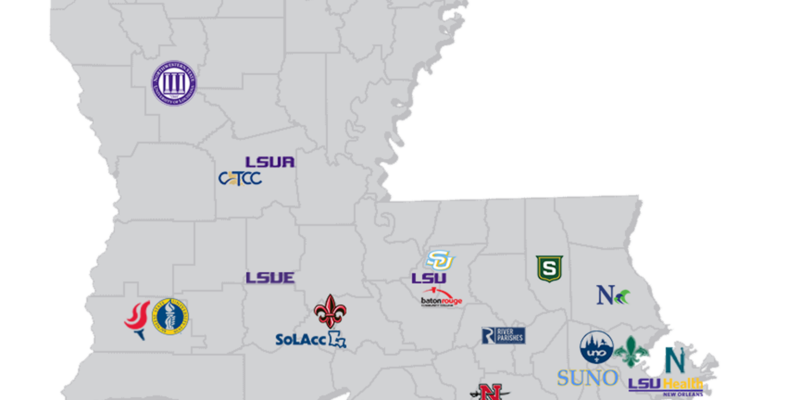The severe financial struggles at the University of New Orleans—now joined by those at the University of Louisiana Monroe—send yet another warning signal: Louisiana’s higher education system is heading into rough waters for years to come unless there is serious rethinking and restructuring.
UNO’s problems began years ago, as its student population plummeted in the wake of the 2005 hurricanes—falling by nearly five-eighths since the fall 2004 semester. ULM’s issues have been less tied to enrollment decline, with overall headcount down only about one percent over the past two decades. However, it has seen a six percent drop since the onset of the Wuhan coronavirus pandemic, alongside a significant falloff in its doctorate-level pharmacy program.
Both schools also made strategic mistakes that worsened their financial standing. UNO drifted from core programs and flirted trendy boutique offerings. ULM, meanwhile, acquired a white elephant of a building that continues to cause spending in the red.
Now, both institutions face multi-million dollar deficits for the coming year and are almost certain to lay off staff—and possibly faculty—as a result. But these two campuses are just the tip of the spear. Louisiana higher education faces a double-edged crisis.
First, under former Democrat Gov. John Bel Edwards, the state lost around 100,000 residents. The losses disproportionately came from younger and higher-earning individuals, shrinking the pool of traditional college students even further. Second, nationwide demographics show a looming 15-year decline in the number of college-age Americans—compounding a 13 percent drop in enrollment over the past 15 years.
Despite that, Louisiana’s higher education enrollments have technically grown three percent over the past two decades. But that figure masks deeper issues. Senior institution enrollment has remained flat, and in-state student enrollment has actually dropped over seven percent. Combine the two, and Louisiana’s senior institutions now enroll over 20,000 fewer state residents than they did 20 years ago.
Further skewing the picture are the two LSU System regional campuses—Shreveport and Alexandria—whose enrollment increases are largely driven by their robust online degree programs. LSUS’s undergraduate enrollment is down 27 percent, but its overall enrollment has soared nearly 150 percent thanks to booming online graduate programs. Today, 60 percent of LSUS students are from out of state, and the campus has more graduate students than LSU’s Baton Rouge flagship. LSUA, similarly, has more than doubled its enrollment via online programs, many of them from beyond Louisiana.
So the enrollment numbers are much shakier than at first glance and highlight was has been true, but ignored, for decades in the state: Louisiana has an overbuilt higher ed system with too many four-year campuses chasing too few in-state students. Sucking in out-of-state and international students (LSU’s international enrollment has nearly tripled since 2004) can only paper over the problem for so long.
Of course, the Board of Regents tried to wish the problem away with a master plan centered on dramatically increasing adult college enrollment. But that vision has failed to materialize—and now looks even less plausible given demographic realities.
And contrary to popular myth, the issue isn’t a lack of state tax dollars. Funding levels have changed little over the time period. While Louisiana ranks low among states in higher education spending per student, it lands around the middle for senior institutions once state-based aid like TOPS is factored in. It remains a myth that Louisiana (and many other states) have suffered “disinvestment” of higher education.
No, the real problem is structural: Louisiana simply has too many four-year institutions for the size of its college-bound population. The financial crises now gripping ULM and UNO are not isolated flukes—they are indicators of a broader foundational failure. Without mergers or the reclassification of some campuses to community college status, the financial crunch will continue to spread. The only alternative is asking taxpayers to endlessly subsidize an inefficient system—a proposition that should be a nonstarter.
Advertisement
Advertisement

